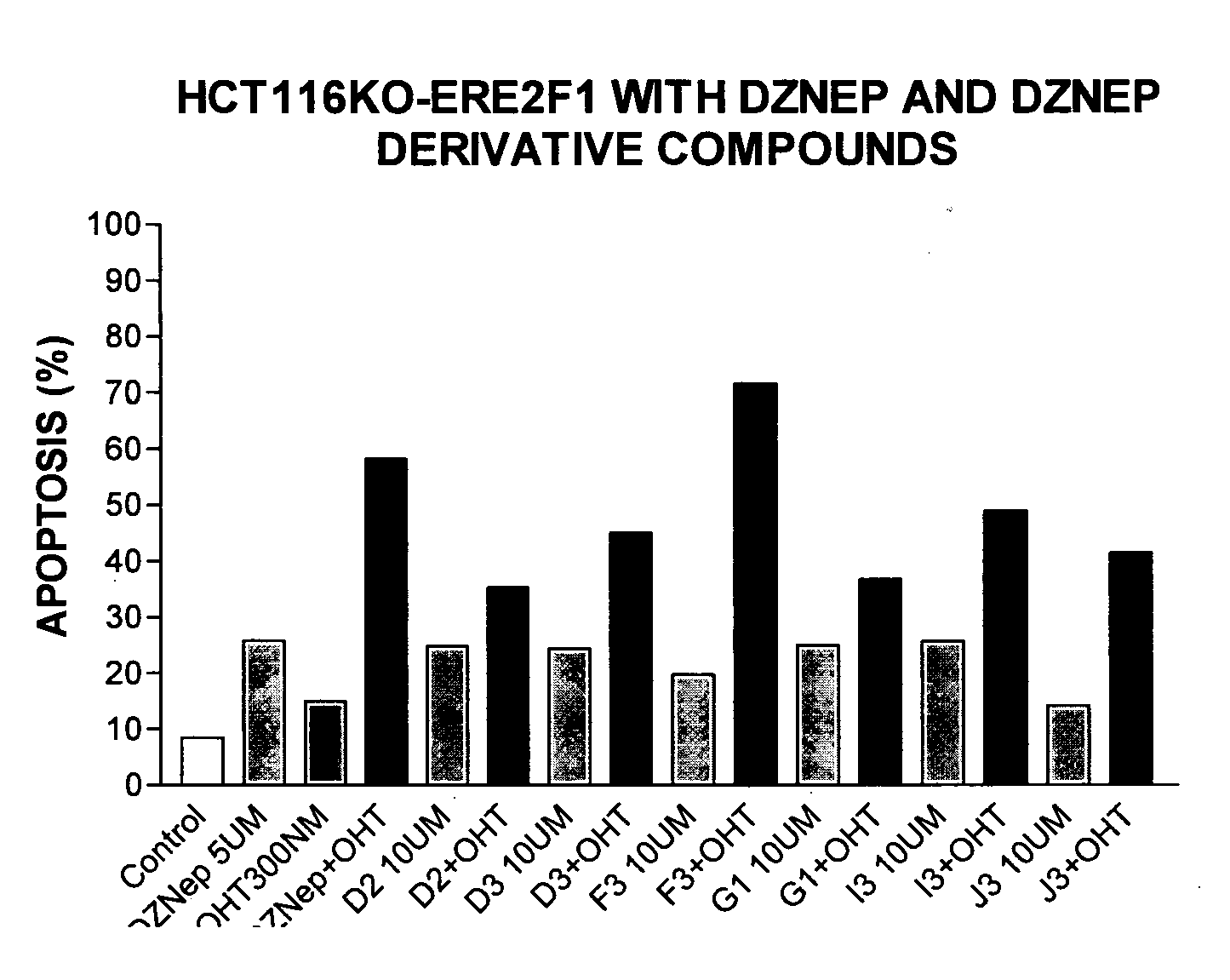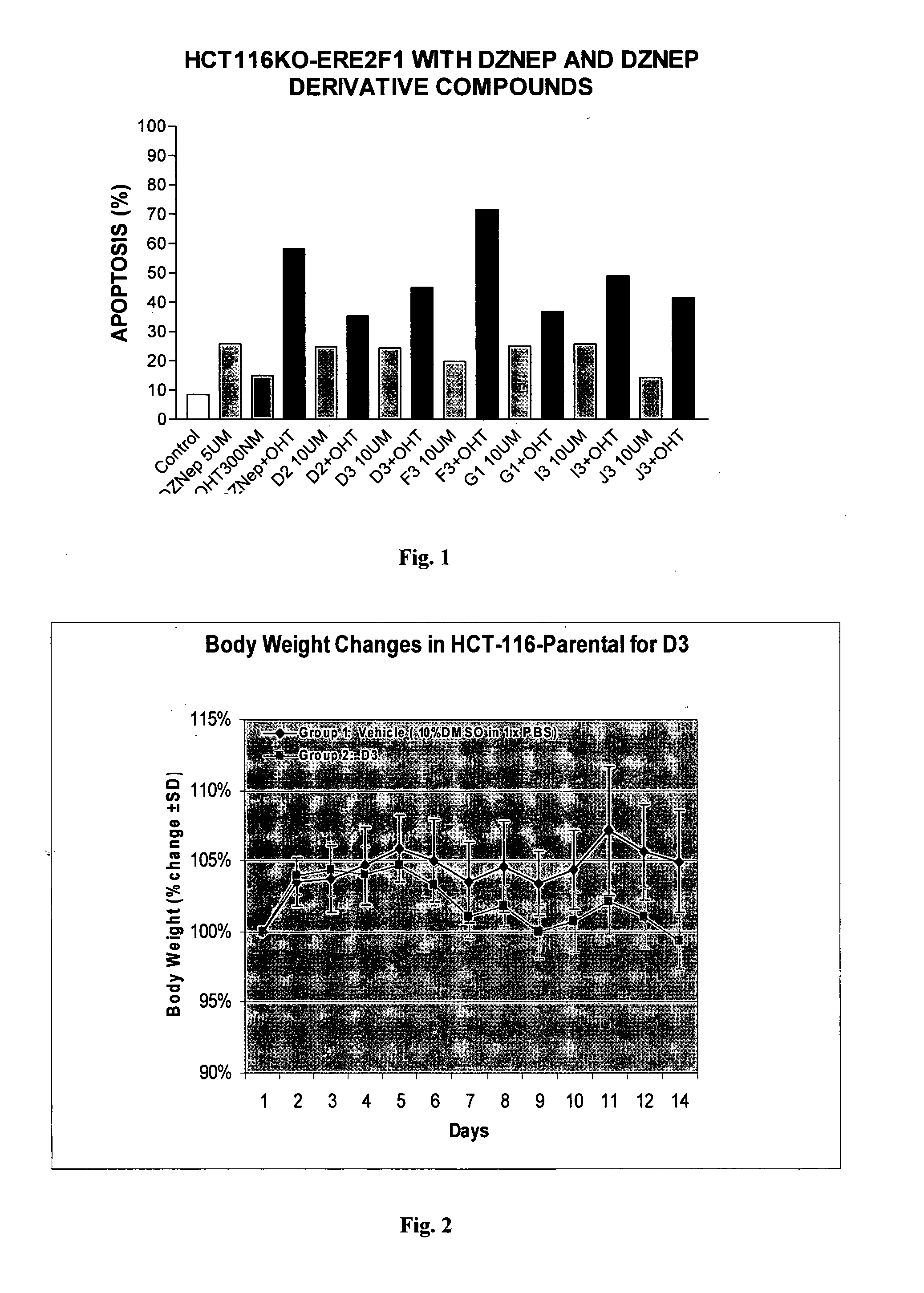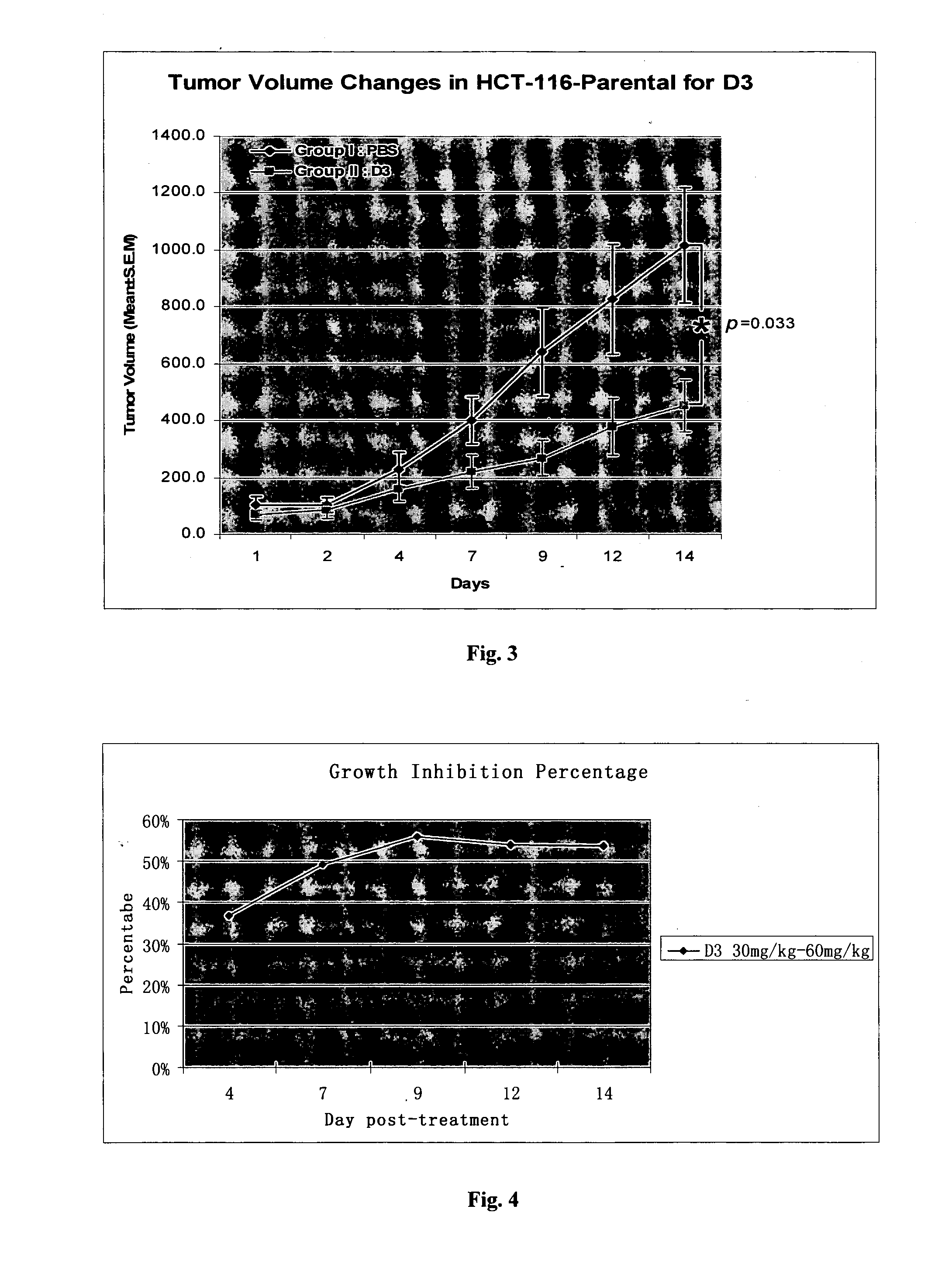3-Deazaneplanocin Derivatives
a technology of 3deazaneplanocin and derivatives, which is applied in the direction of heterocyclic compound active ingredients, biocide, drug compositions, etc., can solve the problems that dznep itself may not be an ideal drug candidate, and no small molecules have been shown to inhibit this important oncogenic signalling pathway
- Summary
- Abstract
- Description
- Claims
- Application Information
AI Technical Summary
Problems solved by technology
Method used
Image
Examples
example 1
2′,3′-O-Isopropylidene-3-deazaneplanocin A
[0085]A mixture of 3-deazaneplanocin A hydrochloride (DZnep) (20 mg, 0.067 mmol), 0.5 mL of DMF and 1 mL of 1 M HCl in diethyl ether in 5 mL of acetone was stirred at room temperature for 18 h and then neutralized with triethylamine (TEA). The solvent was removed under reduced pressure. The residue was purified by flash chromatography (silica gel, MeOH / TEA / DCM=10:10:80) to afford 18 mg (89%) of the title compound. 1H NMR (MeOD, 400 MHz): δ 8.175 (s, 1H), 7.68 (d, J=6.4 Hz, 1H), 7.12 (d, J=6.4 Hz, 1H), 5.55 (s, 1H), 5.36 (d, J=6.0 Hz, 1H), 4.68 (d, J=6.0 Hz, 1H), 4.365 (s, 2H), 1.48 (s, 3H), 1.35 (s, 3H); ESI MS m / z for C15H18N4O3 calculated: 302.14. found: 303.13 (M+H)+.
example 2
3-Deazaaristeromycin hydrochloride (D2)
[0086]To a solution of 3-deazaneplanocin A hydrochloride (DZnep) (15 mg, 0.05 mmol) in 2 mL of MeOH was added 10 mg of 10% palladium on charcoal. The suspension was stirred for 18 h at room temperature under a hydrogen atmosphere. The mixture was filtered with a pad of celite to remove the palladium. The product was purified with preparative LCMS in 50% yield (ratio of two diastereoisomers=1:1). ESI MS m / z for C12H16N4O3 calculated: 264.12. found: 265.11 (M+H)+.
example 3
(1R,4R,5S)-9-N-[3-(hydroxymethyl)-4,5-O,O-isopropylidene-2-cyclopenten-L-yl]-N6,N6-bis-(tert-butoxycarbonyl)adenine
[0087]
[0088]To a solution of (1R,4R,5S)-9-N-[3-(trityloxymethyl)-4,5-O,O-isopropylidene-2-cyclopenten-L-yl]-N6,N6-bis-(tert-butoxycarbonyl)adenine [Tetrahedron lett. 2006, (47) 9187-9189.] (225 mg, 0.45 mmol) in 20 mL of acetone was added 2,2-dimethoxypropane (20 mL) and p-toluenesulfonic acid monohydrate (42.8 mg, 0.225 mmol) at room temperature. The acidic solution was allowed to stir for 18 h at room temperature. The reaction mixture was quenched with 300 mg of solid sodium bicarbonate. The solvent was evaporated in vacuo and the residue was added water (20 mL) and DCM (20 mL). Separated the two phase. The aqueous layer was extracted by DCM (3×20 mL). The combined organic layers were dried with MgSO4 and concentrated in vacuo. The residue purified by flash chromatography on silica gel (petroleum ether / EtOAc=2:1 to 1:2) to give the title compound in 175 mg (75%). 1H N...
PUM
| Property | Measurement | Unit |
|---|---|---|
| temperature | aaaaa | aaaaa |
| temperature | aaaaa | aaaaa |
| humidity | aaaaa | aaaaa |
Abstract
Description
Claims
Application Information
 Login to View More
Login to View More - R&D Engineer
- R&D Manager
- IP Professional
- Industry Leading Data Capabilities
- Powerful AI technology
- Patent DNA Extraction
Browse by: Latest US Patents, China's latest patents, Technical Efficacy Thesaurus, Application Domain, Technology Topic, Popular Technical Reports.
© 2024 PatSnap. All rights reserved.Legal|Privacy policy|Modern Slavery Act Transparency Statement|Sitemap|About US| Contact US: help@patsnap.com










